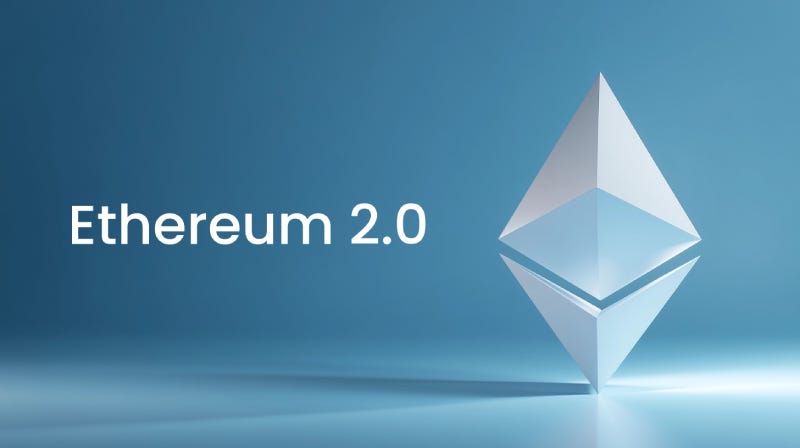Ethereum has long been at the forefront of blockchain innovation. As businesses and developers seek robust, reliable, and scalable platforms for decentralized applications, Ethereum’s evolution is critical. The launch of Ethereum 2.0 marks a pivotal shift in how blockchain networks operate, promising to address many of the limitations that have challenged widespread adoption. This blog explores how Ethereum 2.0 changes blockchain development, what it means for businesses, and why now is the time to partner with an experienced Ethereum Development Company.
Ethereum 2.0, often referred to as Eth2 or “The Merge,” is not just an upgrade — it’s a fundamental reworking of the Ethereum blockchain’s architecture. The primary goals are to improve scalability, reduce energy consumption, and strengthen security, all while maintaining the decentralized ethos that has made Ethereum a leader in the space.
Unlike the original Ethereum network, which relied on the energy-intensive Proof of Work (PoW) consensus mechanism, Ethereum 2.0 transitions to Proof of Stake (PoS). This change dramatically lowers the network’s energy requirements and opens the door for more participants to validate transactions, making the network more inclusive and robust.
For businesses seeking an Ethereum Development Company, these changes mean access to a more efficient, cost-effective, and environmentally friendly platform for building decentralized solutions.
1. Proof of Stake (PoS) Consensus
The move from PoW to PoS is at the heart of Ethereum 2.0. In PoS, validators are chosen to create new blocks and confirm transactions based on the amount of ETH they “stake” as collateral. This method:
- Reduces energy consumption by over 99% compared to PoW.
- Increases network security by making attacks more costly and easily traceable.
- Lowers the barrier to entry for network participation, allowing more individuals and organizations to become validators.
2. Sharding
Sharding divides the blockchain into smaller, manageable pieces called “shards.” Each shard processes its own transactions and smart contracts, which are then coordinated by the Beacon Chain. The benefits include:
- Dramatically increased transaction throughput, with the potential to handle up to 100,000 transactions per second.
- Reduced congestion and lower transaction fees, making the network more accessible for both developers and users.
- Enhanced decentralization, as more nodes can participate in the consensus process.
3. The Beacon Chain
The Beacon Chain is the central coordinator for Ethereum 2.0’s PoS and sharding mechanisms. It:
- Manages validators and their stakes.
- Ensures synchronization and communication between shards.
- Maintains the overall security and integrity of the Ethereum 2.0 network.
Scalability for Real-World Applications
One of the most significant limitations of the original Ethereum network was its inability to handle high transaction volumes efficiently. This led to network congestion and high gas fees, making it difficult for businesses to deploy large-scale applications. Ethereum 2.0’s scalability improvements mean:
- Faster transaction processing.
- Lower operational costs for businesses.
- The ability to support complex decentralized finance (DeFi) platforms, NFT marketplaces, and enterprise-grade solutions.
Energy Efficiency and Sustainability
With global attention on sustainability, Ethereum 2.0’s PoS mechanism aligns with environmental goals by drastically cutting energy consumption. This makes Ethereum a more attractive choice for businesses looking to build green and responsible blockchain solutions.
Stronger Security
PoS and sharding collectively improve the network’s resilience against attacks. The increased number of validators and the economic penalties for malicious behavior make it much harder for bad actors to compromise the network.
Lower Entry Barriers
PoS allows anyone with a minimum amount of ETH to participate as a validator, democratizing access to network participation. This inclusivity encourages a broader, more diverse set of stakeholders, further strengthening the network.
1. Cost Savings
Lower transaction fees and reduced infrastructure costs make Ethereum 2.0 an economical platform for deploying and operating decentralized applications.
2. Enhanced User Experience
Faster transaction confirmation times and reduced congestion mean smoother interactions for end users, which is crucial for business adoption and customer satisfaction.
3. Broader Use Cases
With improved scalability and security, Ethereum 2.0 supports a wide range of applications, including:
- Decentralized Finance (DeFi)
- Supply chain management
- Digital identity solutions
- Tokenization of assets
- Gaming and entertainment platforms
4. Future-Proof Infrastructure
Ethereum 2.0’s architecture is designed to accommodate future upgrades, ensuring that businesses can continue to innovate without worrying about obsolescence.
While Ethereum 2.0 brings significant improvements, it is not without challenges:
- The transition from PoW to PoS required careful planning to maintain network stability and security.
- Educating users and developers about the new system is an ongoing process.
- Maintaining decentralization while scaling up remains a priority and a challenge for the Ethereum community.
Despite these hurdles, the overall outlook for Ethereum 2.0 is positive, with the upgrade laying a strong foundation for the future of decentralized technology.
Finance and DeFi
Ethereum 2.0’s scalability and lower fees make it ideal for DeFi platforms, enabling complex financial products and services that are accessible to a global audience.
Supply Chain
The increased throughput and reliability of Ethereum 2.0 support real-time tracking and verification of goods, reducing fraud and improving transparency.
Healthcare
Secure, immutable records and improved privacy features make Ethereum 2.0 suitable for managing sensitive health data and streamlining patient care.
Gaming and NFTs
Faster transaction speeds and lower costs enhance the user experience for gaming platforms and NFT marketplaces, driving greater adoption and innovation.
Partnering with a skilled Ethereum Development Company is crucial for businesses aiming to harness the full potential of Ethereum 2.0. Such companies offer:
- Deep technical expertise in smart contract development, dApp deployment, and blockchain integration.
- Guidance on best practices for security, scalability, and compliance.
- Ongoing support and maintenance to keep your blockchain solutions up-to-date with the latest advancements.
Ethereum 2.0 sets a new standard for blockchain networks. Its focus on scalability, security, and sustainability makes it the platform of choice for forward-thinking businesses and developers. As the ecosystem continues to grow, Ethereum 2.0 will play a central role in driving the adoption of decentralized technologies across industries.
If you’re looking to develop secure, scalable, and efficient blockchain solutions, now is the time to act. Codezeros specializes in Ethereum Development, helping businesses unlock the full potential of Ethereum 2.0. Our team of experts guides you through every step, from strategy to deployment and beyond.
Contact Codezeros today to start your journey with Ethereum 2.0 and shape the future of your business with cutting-edge blockchain solutions.










